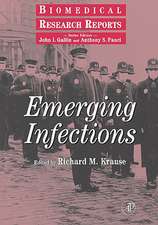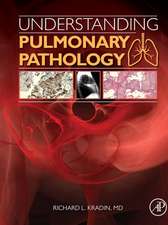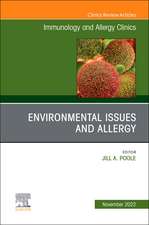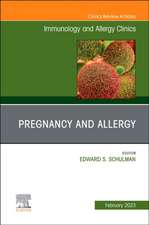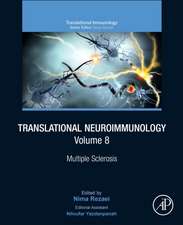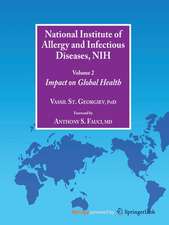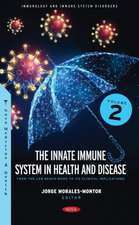Immunopathogenesis of HIV Infection
Editat de Anthony S. Fauci, Guiseppe Pantaleoen Limba Engleză Paperback – 28 sep 2011
Preț: 361.80 lei
Preț vechi: 380.84 lei
-5% Nou
Puncte Express: 543
Preț estimativ în valută:
69.23€ • 72.29$ • 57.17£
69.23€ • 72.29$ • 57.17£
Carte tipărită la comandă
Livrare economică 15-29 aprilie
Preluare comenzi: 021 569.72.76
Specificații
ISBN-13: 9783642645938
ISBN-10: 3642645933
Pagini: 168
Ilustrații: VIII, 153 p.
Dimensiuni: 155 x 235 x 9 mm
Greutate: 0.25 kg
Ediția:Softcover reprint of the original 1st ed. 1997
Editura: Springer Berlin, Heidelberg
Colecția Springer
Locul publicării:Berlin, Heidelberg, Germany
ISBN-10: 3642645933
Pagini: 168
Ilustrații: VIII, 153 p.
Dimensiuni: 155 x 235 x 9 mm
Greutate: 0.25 kg
Ediția:Softcover reprint of the original 1st ed. 1997
Editura: Springer Berlin, Heidelberg
Colecția Springer
Locul publicării:Berlin, Heidelberg, Germany
Public țintă
ResearchCuprins
Contens.- Introduction: Recent advances in the pathogenesis of human immunodeficiency virus infection.- Virologic and immunologic events in primary HIV infection.- The role of viral dynamics in the pathogenesis of HIV disease and implications for antiviral therapy.- Immune dysregulation and CD4+ T cell loss in HIV-1 infection.- Studies on lymphoid tissue from HIV-infected individuals: implications for the design of therapeutic strategies.- Mechanisms of resistance to HIV infection.- HIV-1-specific cytotoxic T lymphocytes and the control of HIV-1 replication.- Noncytolytic CD8 T cell-mediated suppression of HIV replication.- Role of complement and Fc receptors in the pathogenesis of HIV-1 infection.- Simian immunodeficiency virus as a model of HIV pathogenesis.
Textul de pe ultima copertă
During the last 5 years, major advances have been made in our understanding of the pathogenesis of human immunodeficiency virus (HIV) disease and in the development of new potent antiviral agents. With regard to HIV pathogenesis, several recent observations have not only changed our perspectives of HIV disease, but have been critical for the design of therapeutic strategies. These oberservations include: 1. The delineation of the virologic and immunologic events associated with primary HIV infection. 2. The development of highly sensitive molecular techniques including polymerase chain reaction (PCR) assays for the determination of HIV RNA in plasma, together with the identification of lymphoid tissue as the primary anatomic site for HIV replication and spreading. 3. The characterization of the dynamics of HIV infection. 4. The identification of chemokines with suppressor activity on HIV replication and the discovery of co-receptor molecules for HIV entry.

